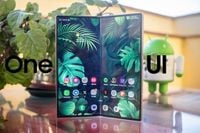Samsung has officially launched its new vehicle control platform, Samsung Auto, integrated into One UI 7, but with significant restrictions that only allow its use in China. This new feature is designed to offer an experience akin to Apple CarPlay and Android Auto, providing users with a seamless interface for navigation, music playback, and real-time widgets on their car's central screen.
According to reports from Android Police and confirmed by 9to5Google, Samsung Auto allows users to pin up to four applications on a sidebar for quick access while driving, enhancing convenience during journeys. The platform employs Bixby as the default voice assistant, diverging from the trend where Google Assistant has been the standard for such applications.
One of the standout features of Samsung Auto is its connectivity with the Galaxy ecosystem, enabling users to start navigation on their Samsung smartphones and continue it in their vehicles. This functionality extends to other devices, including tablets and smartwatches, promoting a cohesive user experience across Samsung products.
However, the rollout of Samsung Auto is currently limited to China due to its reliance on specific local technologies like Baidu CareLife+ and ICCOA Car Link. These platforms facilitate both wired and wireless connections but are only compatible with vehicles sold in China. As a result, users in other countries cannot access Samsung Auto until compatibility with local standards is established.
In addition to Samsung Auto, the company has also announced the upcoming update to One UI 7 for its Galaxy devices in Mexico. On April 17, 2025, Samsung revealed that a total of 66 devices, including various smartphones and tablets, will receive the new operating system in the coming months. The rollout is set to begin in May 2025, starting with the Galaxy S24 series and gradually expanding to additional devices.
The initial wave of updates in May will focus on the flagships from the previous generation, with the Galaxy S24, Galaxy S24+, Galaxy S24 Ultra, Galaxy Z Flip6, Galaxy Z Fold6, Galaxy Tab S10+, and Galaxy Tab S10 Ultra all scheduled for the first month. Following this, the majority of Samsung devices are expected to receive One UI 7 in June and July 2025.
Currently, only six Samsung phone models have already received One UI 7: the Galaxy S25, Galaxy S25+, and Galaxy S25 Ultra in the premium range, along with the Galaxy A26, A36, and A56 in the mid-range. The company has divided the update schedule into monthly segments, ensuring that both unlocked and carrier-locked devices will receive the update simultaneously.
Despite the excitement surrounding the new features, the update process has not been without its challenges. Samsung recently paused the deployment of One UI 7 due to significant errors that arose shortly before the official announcement. Users experienced critical bugs, including one that prevented them from unlocking their phones post-update, leading to widespread frustration.
On April 18, 2025, Samsung resumed the deployment of One UI 7, addressing the bugs that had previously halted the process. The new firmware version, labeled BYD9, weighs just under 300 MB and has started rolling out in South Korea. However, this update is exclusively for devices that had previously installed the stable version of One UI 7.
Samsung's commitment to resolving these issues is evident, as the changelog for the new update includes improvements in stability and error corrections, though it does not explicitly mention the bug that caused the initial pause. The stable version of One UI 7 has also been released for the Z Fold 6 and Flip 6 in South Korea.
Looking ahead, the Galaxy S23, Z Fold 5, and Flip 5 are expected to receive their stable updates before the end of April 2025. Meanwhile, premium and older mid-range models are slated for an update on May 15, 2025, ensuring that a wide range of users can benefit from the new features.
In summary, while Samsung Auto presents an exciting new frontier for vehicle integration, its current limitations underscore the challenges of global technology deployment. As Samsung continues to refine its software and expand its offerings, users can expect a more connected and user-friendly experience across their devices.






